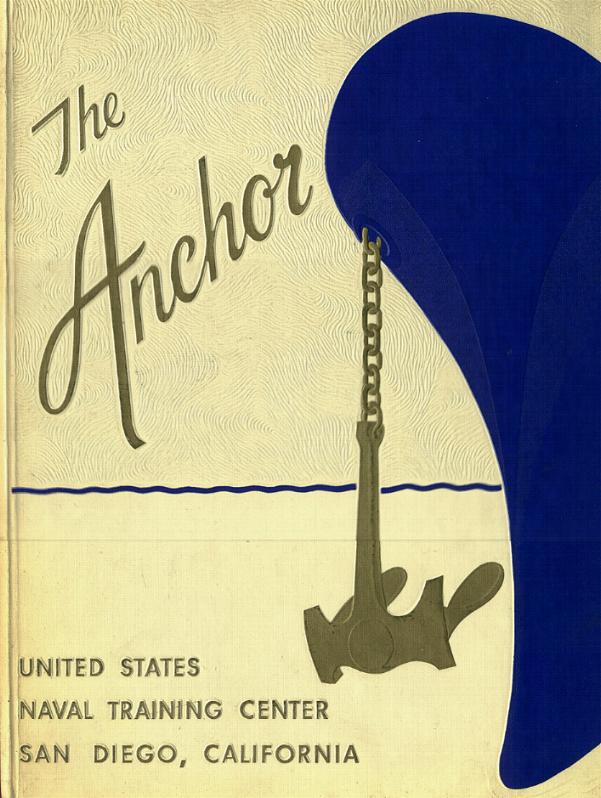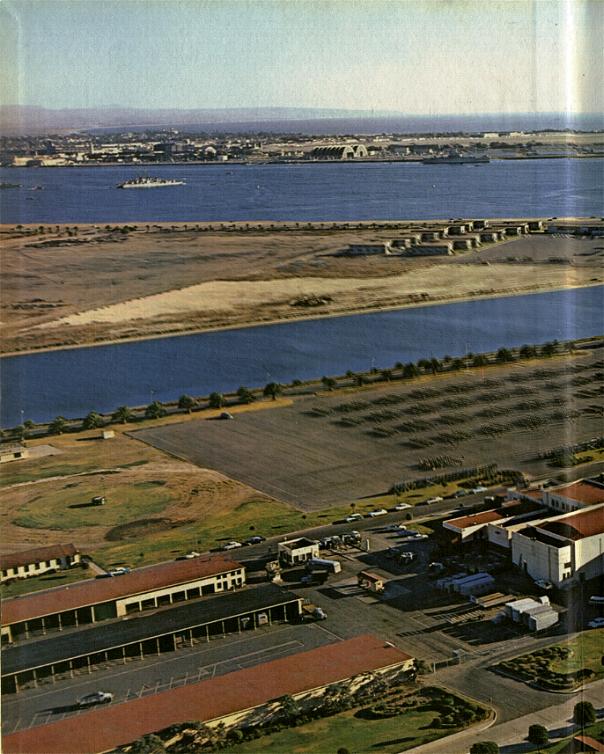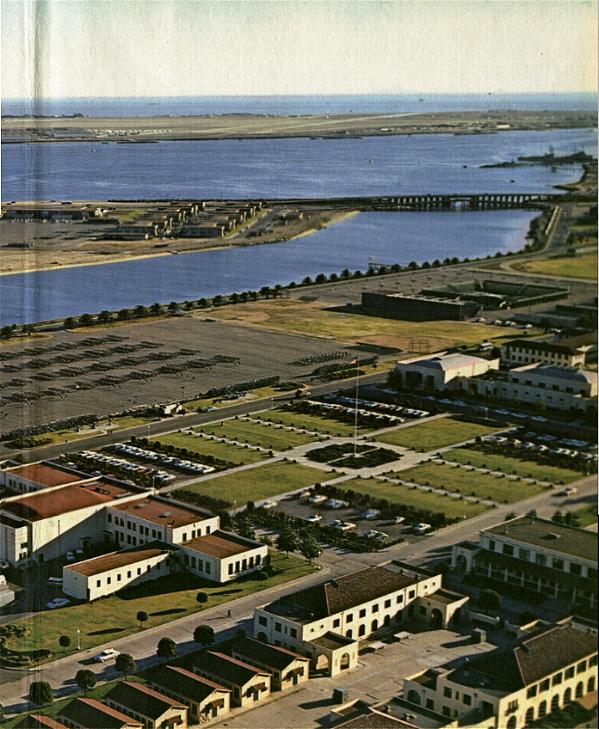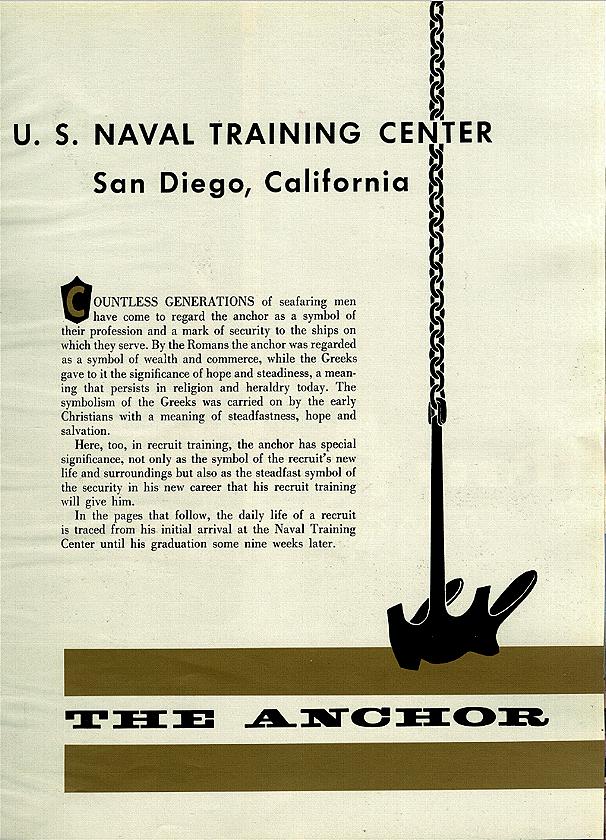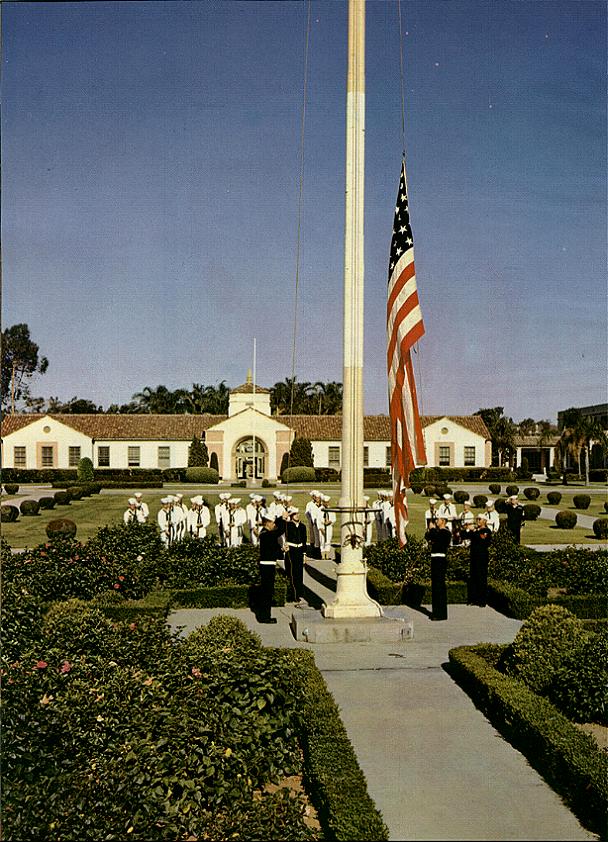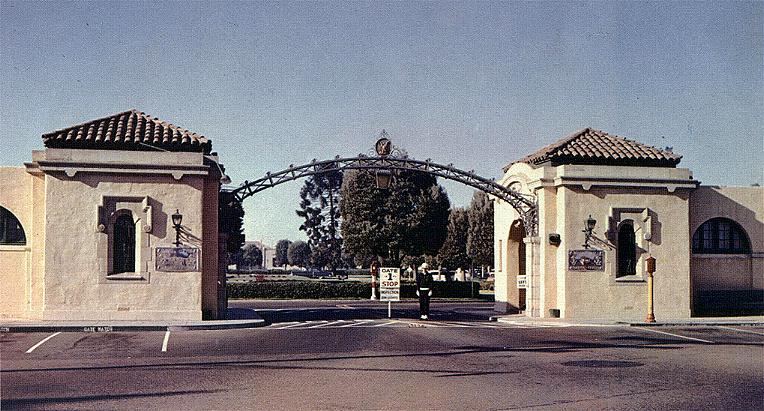THE NAVAL TRAINING CENTER, San Diego, had
its inception in 1916 when Mr. William Kettner,
Congressman from the Eleventh Congressional
District of California and spokesman for the San
Diego Chamber of Commerce, interested the
Honorable Franklin D. Roosevelt, then Assistant
Secretary of the Navy, in establishing a naval
training activity on the shores of San Diego Bay.
Due to the Nation's entry into World War I,
further development of this plan was postponed
until 1919, when Congress authorized acceptance
by the Navy of the present site of the Training Center.
The original grant consisted of 135 acres of highland
donated by the San Diego Chamber of Commerce
and 142 acres of tideland given by the City of San Diego.
Construction work began in 1921, and on 1 June 1923
the U. S. Naval Training Station, San Diego, was placed
in commission under the command of Captain (later Rear
Admiral) David F. Sellers, U. S. Navy.
At the time of its commissioning in 1923 the station
bore little resemblance to its present size or arrangement.
At that time Camp Paul Jones housed the entire
population of the station and the maximum recruit strength
was 1,500. The period of recruit training was then sixteen
weeks. The shore line of San Diego Bay extended
considerably further inland than at present, and the
land now occupied by Preble Field, the North Athletic
Area and Camp Farragut was entirely under water. The
recruit parade ground was located on the present site
of the Public Works garage. During the 1920's the
Recruit Receiving and Outgoing Units were housed in
the Detention Unit, known as Camp Ingram, which
|
consisted of a group of walled tents adjacent to the
south boundary of Camp Paul Jones. Until Camp
Lawrence was completed in 1936, recruits spent their first
three weeks of training under canvas in this Detention Unit.
In 1939 a construction program was commenced which
within three years was to increase the capacity of the station
four-fold. This expansion went hand in glove with a large
scale program of harbor improvements by means of which
the channel and anchorages in San Diego Bay were
deepened and 130 acres of filled land were added to the
eastern boundaries of the station. By 1941 Camp Luce had
been completed, and the construction of Camps Mahan,
Decatur, and Farragut was already well under way when
the Japanese attacked Pearl Harbor. Virtually all this
construction work was completed by September, 1942,
when the capacity of the station had reached its wartime
peak of 33,000 men, 25,000 of whom were recruits. The
period of recruit training during World War II varied between
three weeks and seven weeks.
In April, 1944, the Secretary of the Navy changed the status
of the Training Station to that of a group command and
redesignated it the U. S. Naval Training Center, San Diego.
Under the Center Commander were established three sub-
ordinate commands: The Recruit Training Command,
The Service School Command and the Administrative Command.
The years immediately following World War II saw a considerable
reduction in population of the Training Center despite a post-war
expansion of the Service Schools, and by the end of 1949 the
population of the Center had dropped to a twenty-year low of
5,800 men. Six months later, when the Communists invaded the
Republic of Korea, an immediate expansion of all Naval training
activities took place and by September of 1950 the Center was
again operating at nearly full capacity. |
